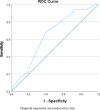Factors affecting ability of TB patients to follow treatment guidelines - applying a capability approach
- PMID: 37658369
- PMCID: PMC10474720
- DOI: 10.1186/s12939-023-01991-7
Factors affecting ability of TB patients to follow treatment guidelines - applying a capability approach
Erratum in
-
Correction: Leaving no one behind on the road to Universal Health Coverage: The Kerala story.Int J Equity Health. 2024 Jul 9;23(1):137. doi: 10.1186/s12939-024-02195-3. Int J Equity Health. 2024. PMID: 38982415 Free PMC article. No abstract available.
Abstract
Background: Negotiating anti-Tuberculosis treatment is a complicated process comprising daily consumption of multiple medications at stipulated times and dosages, as well as periodic follow-ups and investigations, may not be uniform for all Tuberculosis (TB) patients and some may perform better than others. In this context, we conducted a study in Thiruvananthapuram district, Kerala to ascertain the ability of those suffering from TB to follow treatment guidelines.
Methods: This study used an embedded mixed methods design. We collected cross-sectional data from 135 drug sensitive pulmonary TB patients aged 18 years or above in Thiruvananthapuram, Kerala using a structured questionnaire to get the proportion of patients following all treatment guidelines. We also did eight in-depth interviews (four men and four women) from within the survey sample. The in-depth interviews were inductively analysed for getting deeper insights about reasons for the choices people made regarding the treatment guidelines. Written informed consent was taken from all participants and the study was implemented after the necessary programmatic and ethical clearances.
Results: Of the 105 men and 30 women studied, uninterrupted daily drug consumption was reported by 80 persons (59.3%, 95% Confidence Intervals (CI) 50.8-67.2%). Overall, 38 (28.2%, 95% CI 21.3%-36.3%) persons were able to follow all seven aspects of advised guidelines. Living in an extended/ joint family (Adjusted Odds ratio (AOR) 2.6, 95% CI 1.1-6.0), approximate monthly household expenditure of over rupees 13,500 (AOR 2.9, 95% CI 1.3-6.7) and no perceived delay in seeking initial care (AOR 3.2, 95% CI 1.2-8.7) were significantly associated with following all aspects of treatment guidelines. In-depth interviews revealed reflective treatment related behaviours were influenced by bodily experiences, moral perceptions, social construct of TB, programmatic factors and substance use. Sometimes behaviours were non-reflective also. Programmatic stress was on individual agency for changing behaviour but capability and opportunity for these were influenced social aspects like stigma, gender roles and poverty.
Conclusion: TB patients live amidst a syndemic of biomedical and social problems. These problems influence the capabilities and opportunities of such TB patients to follow treatment guidelines. Interventions should balance focus on individual agency and social abd economic factors.
Keywords: Anti-tuberculosis treatment; Equity; Gender; National TB Elimination Programme; Socioeconomic deprivation.
© 2023. BioMed Central Ltd., part of Springer Nature.
Conflict of interest statement
The authors declare no competing interests.
Figures



Similar articles
-
Prevalence and correlates of depression and anxiety among patients with tuberculosis at WolaitaSodo University Hospital and Sodo Health Center, WolaitaSodo, South Ethiopia, Cross sectional study.BMC Psychiatry. 2015 Sep 14;15:214. doi: 10.1186/s12888-015-0598-3. BMC Psychiatry. 2015. PMID: 26370894 Free PMC article.
-
Diagnostic and treatment delay among new pulmonary tuberculosis patients in Southern India: A cross-sectional study.Indian J Public Health. 2022 Nov;66(Supplement):S60-S65. doi: 10.4103/ijph.ijph_1079_22. Indian J Public Health. 2022. PMID: 36412476
-
Factors associated with treatment delay among newly diagnosed tuberculosis patients in Dessie city and surroundings, Northern Central Ethiopia: a cross-sectional study.BMC Public Health. 2018 Jul 28;18(1):931. doi: 10.1186/s12889-018-5823-9. BMC Public Health. 2018. PMID: 30055593 Free PMC article.
-
Delays to anti-tuberculosis treatment intiation among cases on directly observed treatment short course in districts of southwestern Ethiopia: a cross sectional study.BMC Infect Dis. 2019 May 29;19(1):481. doi: 10.1186/s12879-019-4089-x. BMC Infect Dis. 2019. PMID: 31142288 Free PMC article.
-
Association between household solid fuel use and tuberculosis: cross-sectional data from the Mongolian National Tuberculosis Prevalence Survey.Environ Health Prev Med. 2021 Aug 9;26(1):76. doi: 10.1186/s12199-021-00996-4. Environ Health Prev Med. 2021. PMID: 34372757 Free PMC article.
Cited by
-
Health in Kerala: exploring achievements and remaining challenges of health systems reform using an equity lens.Int J Equity Health. 2025 Apr 2;24(1):89. doi: 10.1186/s12939-025-02414-5. Int J Equity Health. 2025. PMID: 40176134 Free PMC article.
-
Correction: Leaving no one behind on the road to Universal Health Coverage: The Kerala story.Int J Equity Health. 2024 Jul 9;23(1):137. doi: 10.1186/s12939-024-02195-3. Int J Equity Health. 2024. PMID: 38982415 Free PMC article. No abstract available.
-
Coping efforts made: Psychological burden of people living with tuberculosis due to social stigma in society. A qualitative phenomenology study.PLoS One. 2024 Jul 30;19(7):e0303331. doi: 10.1371/journal.pone.0303331. eCollection 2024. PLoS One. 2024. PMID: 39078843 Free PMC article.
References
-
- Indian Council of Medical Research, Ministry of Health & Family Welfare, Government of India. National TB Prevalence Survey in India (2019–2021), Summary Report. 2022. https://tbcindia.gov.in/showfile.php?lid=3659. Accessed 03 Apr 2023.
Publication types
MeSH terms
LinkOut - more resources
Full Text Sources
Medical

